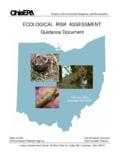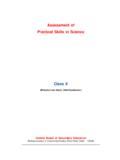Transcription of Whiteness Assessment: A Primer - axiphos.com
1 Whiteness assessment : A Primer Concepts, Determination and Control of Perceived Whiteness Dr. Claudio Puebla Axiphos GmbH Germany _____ Copyright 2003-2006 Axiphos GmbH. All rights reserved. Revised: September 2006 Page 1 of 64 _____Whiteness assessment : A Primer Copyright Notice 2001-2006 Axiphos GmbH, Germany, all rights reserved Information in this document is subject to change without notice and does not represent a commitment on the part of Axiphos GmbH. This recompilation does not claim to be exhaustive and/or complete; it is regularly updated, please refer to the date of last version. This information and our technical advice whether verbal, in writing or by way of trials- are given in good faith bit without warranty and this also applies where proprietary rights of third parties are involved.
2 Our advice does not release you from the obligation to verify the information currently provided and to test our products as to their suitability for the intended processes and uses. The application, use and processing of our products and the products manufactured by you on the basis of our technical advice are beyond our control and, therefore, your entirely own responsibility. Our products are sold in accordance of our General Conditions of Sale and Delivery. _____ Copyright 2003, 2004 Axiphos GmbH. All rights reserved. Revised: September 2004 Page 2 of 64 _____Whiteness assessment : A Primer Preface Measured by the number of colors perceived by the eye, the color white is by far the most encountered one in the human environment. Regardless of the area examined, textiles, paper, plastics or detergents, the color white is clearly the preferred color in many utilitarian and aesthetical applications.
3 On the other hand no much literature is readily available on this important theme, reflecting a series of serious problems encountered in the assessment and most remarkably in the instrumental measurement of white surfaces. The emergence of Fluorescent Whitening Agents (FWA) during the fifties and their massive application during the decades thereafter has been without doubt responsible for the enormous impetus experienced in this area. The addition of fluorescence makes it necessary to step up from white color to Whiteness , adding a stronger psychophysical accent than encountered with other colors, and posing a challenge to visual assessment . In fact fluorescence adds a new dimension to the industrial color area and, given the importance of white objects, it creates a subspace of its own denoted as Whiteness .
4 On the other hand, fluorescence poses a challenge to measuring instruments; as a matter of fact many of the problems encountered in the Whiteness area originate in inadequacies of instrumental assessment . The emergence of new techniques based on the availability of cheap and fast computer power brings solutions to many of the problems that the user comes across while dealing with Whiteness , thus adding fresh ideas and impetus to an old area to be rediscovered. Much has to be done also on wide spreading information about Whiteness concepts and literature. The present booklet evolved from an electronic help file intended to serve as a quick tool to clarify basic concepts; the content has been revised and augmented to give better comprehension and presentation of concepts, some figures and diagrams have been added to provide a basic text for start dealing with the problem of Whiteness .
5 Dr. Claudio Puebla Managing Director Axiphos GmbH, Germany June 2003 _____ Copyright 2003, 2004 Axiphos GmbH. All rights reserved. Revised: September 2004 Page 3 of 64 _____Whiteness assessment : A Primer Contents Part I - Basic principles chapter 1 - Introduction 6 - About light 7 - Assessing colors 8 chapter 2 - The color white 11 - White vs. Whiteness 13 - On near-whites 14 - On yellowness 15 - On color mixing 16 chapter On Whiteness 19 - The color of substrate 20 - Introduction to fluorescence 21 - The concept of shading 22 A general picture of Whiteness 23 Part II - Measuring Whiteness chapter 4.
6 - Where are objects showing Whiteness located? 25 Critical comments about Whiteness formulas 26 chapter 5. - One-dimensional Whiteness formulas 27 Berger Whiteness formula 27 - Whiteness index (ASTM) 27 Stensby Whiteness formula 28 - Taube Whiteness formula 29 chapter Two-dimensional Whiteness formulas 30 - Method of Ganz and Griesser 30 - Formula after CIE 31 chapter Instrumental assessment 33 - Adjusting UV to daylight conditions 34 - Calibration standards 35 Triplet effect 37 Part III - Applications chapter Achieving high- Whiteness values 38 Tools for the evaluation of Whiteness 38 - The importance of shading 41 _____ Copyright 2003, 2004 Axiphos GmbH.
7 All rights reserved. Revised: September 2004 Page 4 of 64 _____Whiteness assessment : A Primer - Evaluation of fluorescence on metameric effects 41 - Matching Whiteness of pairs 42 Appendix (Books, reviews and norms) 47 Books 47 Reviews 48 Reports 49 Related norms 50 Selected literature (1990-2001)
8 52 Glossary 57 Index 64 _____ Copyright 2003, 2004 Axiphos GmbH. All rights reserved. Revised: September 2004 Page 5 of 64 _____Whiteness assessment : A Primer Part I. - Basic principles chapter 1. - Introduction Color perception is a basic function of living (and especially human) beings necessary for appreciation of natural environment; information provided by the color perception mechanism is processed by the brain resulting in vital information for operation, behavior and ultimately survival of the species.
9 While vision is quite widespread in nature, color vision is limited to those species with color receptors; color perception depends on the spectral distribution of the detected light intensities at each of the wavelengths within detection range. Color receptors probe the distribution and react producing signals with different intensities that are processed by the brain originating the color perception phenomena. In general the process can be resumed as one stimulus (light) producing some electrical signal (color receptors in the eye) that is processed in the brain to evoke some biologically sensible conscious awareness; this relationship is matter of study of a discipline called psychophysics. The human eye has three color receptors (connected to vision of green, red and blue) called cones and one more sensitive to light intensity, called rods.
10 Physically, color description is based on modeling the interactions between the light source illuminating the object, the object itself and the response of the color receptors. Description of color is thus related to a triad of numbers as follows: luminosity: this is related to the relative intensity of the light coming from the object and is connected to the response of the rods; its value is also connected to the concepts of white (high value) and black (low value). chroma: this is the amount of color perceived by the eye, it is also known as color saturation; colors from monochromatic sources possess the highest possible saturation values. hue: this number accounts for the observed color and its value is also given as an angle going from red, yellow, to green and blue; sometimes it is related to monochromatic sources characterized by the so called "dominant" wavelength.






